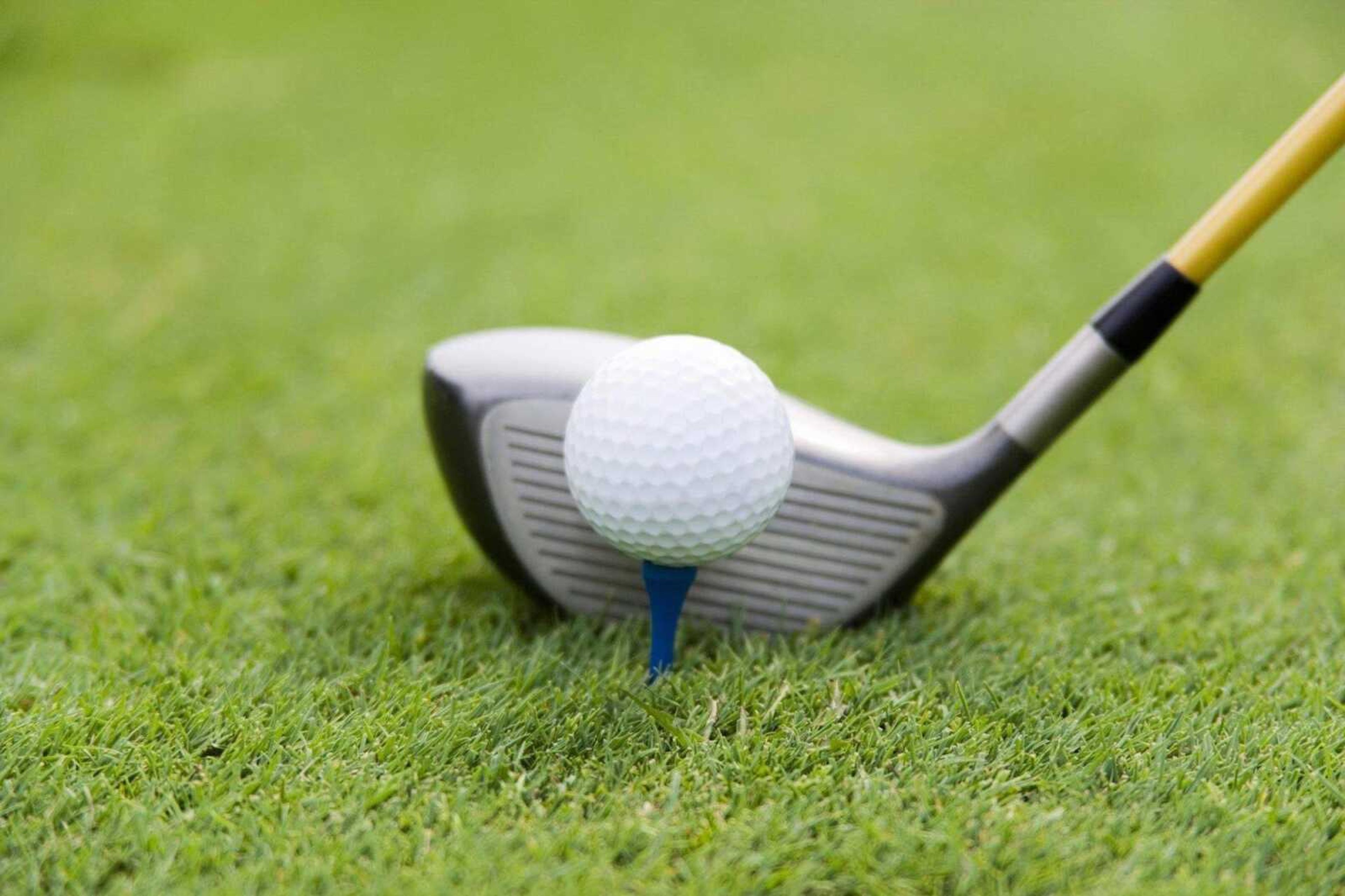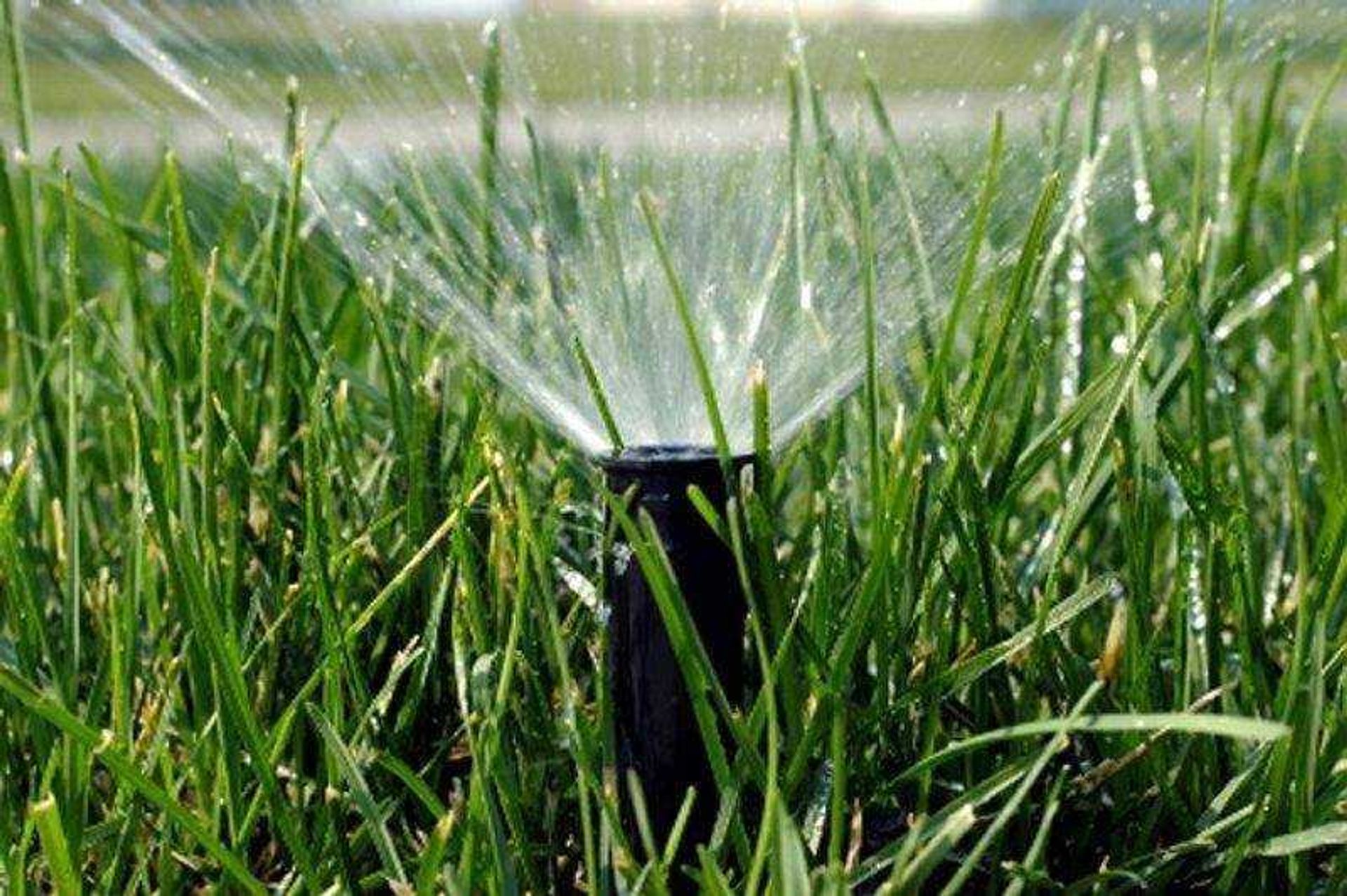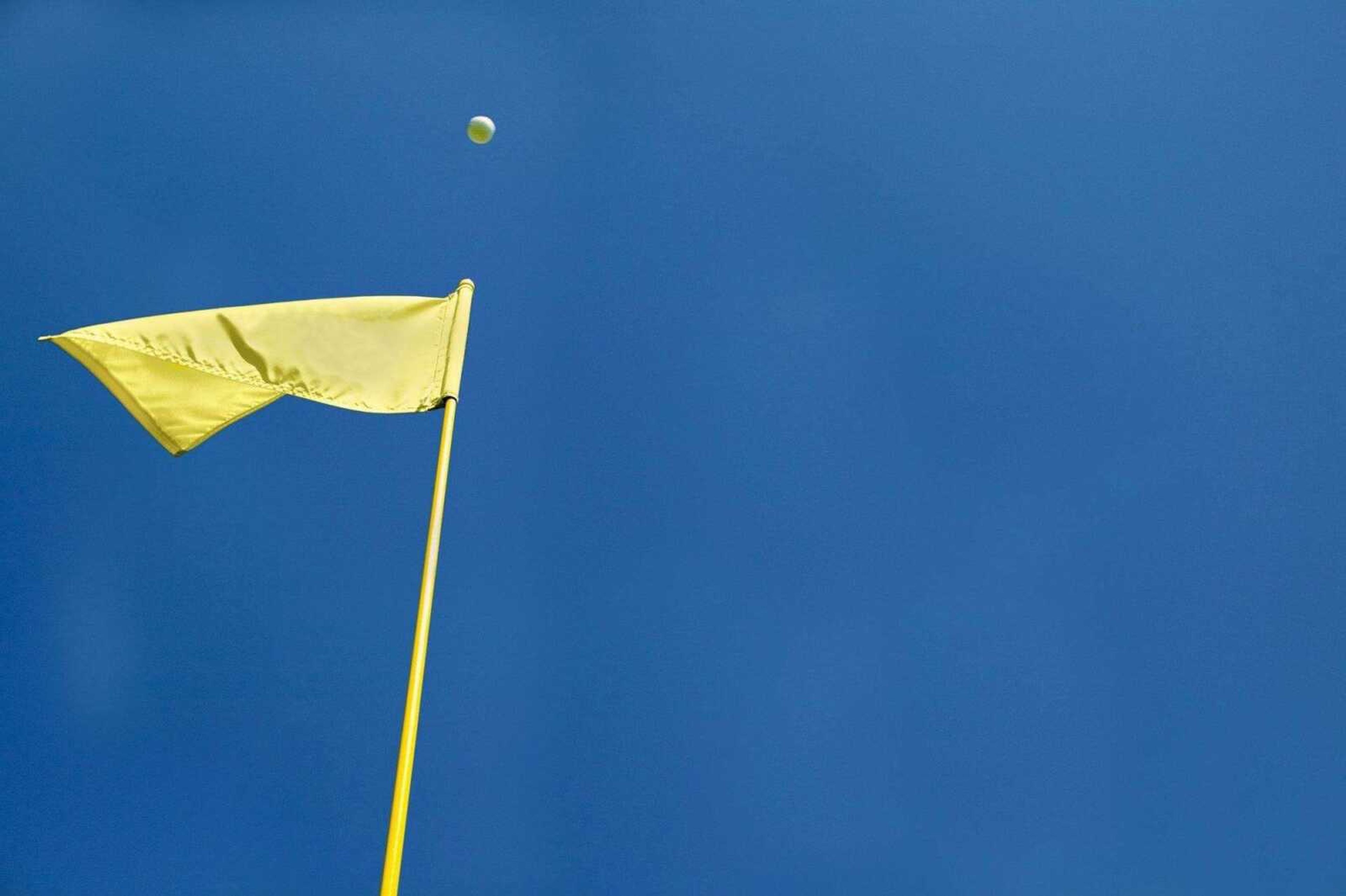Greens
There is little doubt, the small, crowned greens at Jaycee are from a different era. The green's Bermuda grass thrives in the scorching heat but withers in the cooling months.
Advisory board member Kenny Bramlett said as far as he knows, Jaycee is the northernmost course in the area with Bermuda greens. The four other courses in the county -- Bent Creek, Kimbeland Country Club, Cape Girardeau Country Club and Dalhousie Golf Club -- all have bentgrass.
Jaycee had bentgrass greens when it opened in 1955, but they were replaced with Bermuda grass about 15 years later. Temporary greens were a primitive solution to the Bermuda problem. In winter months, circles were painted on groomed grass nearby the permanent greens to allow play on nine holes.
The new A-4 bentgrass greens will average 5,000 square feet, which will be nearly a 50 percent increase from the current average of 3,500.

Bentgrass greens will allow for year-round play, which will increase the course's use. Cape Girardeau Parks and Recreation director Dan Muser said the course gets about 20,000 to 25,000 rounds of play a year, down from about 30,000 of 10 years ago.
Bentgrass greens always have been more temperamental and expensive than Bermuda, requiring more maintenance and chemicals. It was the reason why the original bentgrass was banished, but Bramlett said technological advances have made for more hearty varieties. Where greens are not being relocated, the clay base of the current greens will be removed and rebuilt to USGA standards, which include layers of gravel and sand.
Architect Arthur Schaupeter said he is planning greens with subtle movement, rather than severe undulation, which will allow for a variety of pin positions and strategies.
Irrigation
Muser said the current irrigation system, installed more than 20 years ago, was the last major project that was not performed in-house.

The current system, which waters tees, fairways and greens, has leaks and is not up to the task of taking care of the new greens.
Besides being more dependable, the new watering system will have controls that will allow for better distribution of water. Areas that need more water will be able to get it without saturating other areas.
"In 20 years, so much has changed," Muser said. "This will be a lot more sophisticated and a lot better."
Rerouting
Schaupeter said the 11th hole stood out as by far the worst when Schaupeter first saw the course.
"It isn't even a legitimate par 4," he said. "Any time you have a foul pole, something has gone dramatically wrong either in the layout or design."
The 11th hole, a 270-yard par 4, makes a 90-degree turn that mandates a layup on the tee shot -- a shot that can get messy by going too long or short. A ball is considered out-of-bounds if it goes left of a white telephone pole at the left corner.
Schaupeter's rerouting plan blows up the current No. 11, turning it into a 490-yard par 5 that veers off to the right.
Hole Nos. 12 to 15 would retain their par values but would have their tee boxes and greens relocated. A major part of the reason for relocating the greens on those holes is to allow for better air flow to greens that were either too low or surrounded by trees.
Another big change would come on No. 17, which will be reduced from a 428-yard par 5 to a 400-yard par 4. A dogleg will be eliminated and the green relocated for better air circulation.
"I'm all for people having shots at eagle, you want to set those opportunities up, but 428 yards for a par 5 is not legitimate at all," Schaupeter said.
On the existing 11 and 17, Schaupeter said the course forces golfers to play a hole a particular way.
"You had to hit a specific shot, and then you turn around and you're left with a specific shot to the green," Schaupeter said. "And to me, that's not enjoyable golf, and it's not in the true nature of the game. The true nature of the game is give people the opportunity to go out there and discover their own route and play the game to their own strengths or weaknesses and find their own enjoyment."
The front nine will basically remain intact but with enlarged greens and added bunkers.
"I think the rerouting of the five holes on the back nine is really going to pump up the whole renovation of the golf course," Schaupeter said. "I think it's really going to dramatically lift the caliber of the experience for the players."
-- Jeff Breer
Connect with the Southeast Missourian Newsroom:
For corrections to this story or other insights for the editor, click here. To submit a letter to the editor, click here. To learn about the Southeast Missourian’s AI Policy, click here.







